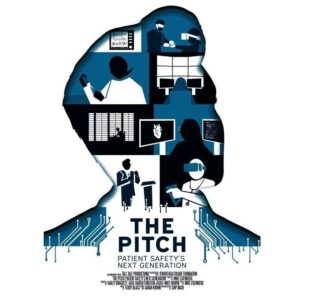Healthcare Simulation Research May 2024
The field of healthcare simulation has made tremendous strides over the past several decades with the latest focus on artificial intelligence (AI) and more innovative strategies to teach our healthcare providers and students. Multiple peer-reviewed journals focus on clinical simulation research. Simulationists should keep up-to-date on the latest research findings and evidence by reading and evaluating clinical simulation journals. This HealthySimulation.com article by Content Manager Teresa Gore, PhD, DNP, APRN, FNP-BC, CHSE-A, FSSH, FAAN, provides an overview of the latest clinical simulation highlights as of May 2024 and explains how these updates impact the healthcare simulation community overall.
Utilisation of extended reality for preprocedural planning and : a practical guide for spatial computing: The specific XR hardware chosen can affect the overall quality of the experience. In general, a higher resolution, display type (active-matrix organic light emitting diode [AMOLED], organic light-emitting diode [OLED], or liquid-crystal display [LCD]), tracking resolution, refresh rate, and field of view are ideal. Resolution and field of view are most important for manipulating patient-specific anatomy and preprocedural planning.
The comfort and ergonomics of each headset are important for XR users as well. Overall, XR is an emerging technology that has the potential to advance our capabilities for trainee education and preprocedural planning in anaesthesiology. This guide highlights practical use cases to engage exploration and adoption as the field of spatial computing continues to advance.
Sponsored Content:
Artificial Intelligence and Healthcare Simulation: The Shifting Landscape of Medical Education : Artificial intelligence (AI) is poised to revolutionize medical education and healthcare simulation (HCS), offering scalability and enhancing interprofessional education. AI-driven diagnostic decision support systems (DDSS) in HCS improve diagnostic accuracy, patient communication, and triage decisions. However, concerns arise regarding bias and system reliability. As HCS is intertwined with computer technology, this can be the most practical place to test new AI applications.
This will ensure the acquisition of AI literacy for graduates from the country’s various healthcare professional schools.Integrating AI into healthcare curricula necessitates adapting to evolving technology, yet it enhances self-directed learning and personalized coaching through virtual reality platforms. While AI holds promise, addressing security and privacy concerns is crucial, given the precedent of societal oversight failures with social media. Proactive measures are essential to safeguard healthcare practitioners, students, and patients in this AI-driven landscape.
Practical Suggestions to Align with Standards: Findings from Endorsement Reviewers : The purpose of endorsement through International Nursing Association for Clinical Simulation and Learning is to demonstrate application of the Healthcare Simulation Standards of Best PracticeTM. Endorsement of simulation centers/programs began in 2022 through the International Nursing Association for Clinical Simulation and Learning. Since inception, the International Nursing Association for Clinical Simulation and Learning Healthcare Simulation Standards Endorsement program has endorsed 32 educational simulation programs and 2 hospital-based simulation programs.
All applications are reviewed by a team of simulationists who have gone through the reviewer training. While completing these reviews, the authors identified common areas in which applicants did not meet or only partially met Healthcare Simulation Standards criteria. This paper provides some practical suggestions for meeting specific criteria. We anticipate that the insights shared in this paper could be used by simulation center staff to improve their adherence to and application of the standards.
Sponsored Content:
An Experimental Study of an Animal-Assisted Intervention in Healthcare Simulation to Reduce Negative Affective Arousal Post-Simulation : This study explores the role of Animal Assisted Interventions (AAIs) in mitigating post-simulation stress among healthcare learners. Effective experiential learning requires an optimal level of stress; excessive stress hampers learning. AAIs, particularly involving canines, show promise in reducing negative affective arousal post-simulation.
The study, employing an experimental design with healthcare students, compared AAI with diaphragmatic breathing. Both interventions significantly reduced emotional distress, with the canine intervention showing superior results in anxiety reduction. Participants and facilitators responded positively to the canine’s presence. AAIs could be seamlessly integrated into post-simulation periods, especially for emotionally intense scenarios, enhancing learning experiences and emotional well-being.
Strategic Realignment in Healthcare Simulation Education: Shifting Focus From Assistants to Technician Training Pathways : Simulation is vital for healthcare training, yet workforce challenges persist. This article details the development of an undergraduate minor program to address these issues and enhance simulation education. Initially conceived for simulation assistants, the program shifted focus to training simulation technicians. Informed by industry insights, the curriculum aligns with accreditation standards, emphasizing practical knowledge.
Integrated knowledge translation (iKT) fosters collaboration, ensuring program relevance. Stakeholder feedback guided program refinement, addressing concerns of role delineation and alignment with certification frameworks. The program’s evolution involved enhancing competency frameworks, validation through surveys, and forming partnerships for practical training. A certification committee ensures ongoing alignment with industry standards. This collaborative effort aims to produce graduates prepared for the dynamic field of healthcare simulation technology, thereby improving patient outcomes and advancing simulation education.
Prioritizing Simulation Facilitators’ Competencies for Professional Development Using Q-Methodology : High-quality simulation requires competent facilitation. The Facilitator Competency Rubric (FCR) identifies facilitator competencies; a gap exists prioritizing competency development. Using Watts and Stenner’s Q-methodology, 73 simulationists prioritized 29 statements derived from FCR from most to least meaningful.
The authors analyzed data using Spearman correlation and centroid factor analysis with varimax rotation and described viewpoint differences using qualitative analysis. Two main viewpoints explained 41.5% of variance. Simulationists across both viewpoints agreed creating psychologically-safe environments was most important whereas administrative tasks were least. The two distinct viewpoints emphasized facilitating metacognition during simulation and debriefing verses structuring debriefing. This paper provides professional development design recommendations.
More About Medical Simulation Research
Medical Simulation has emerged as a professional field within healthcare education, training, and patient safety. Healthcare Simulation Research Journals have paved the way for academic exploration, understanding, and evolution of the modern day methodology with numerous unique moving parts including: scenario development, debriefing, facilitation, technology, operations, learning theories, and more. A list of available medical simulation journals and healthcare simulation research publications available from around the world is available on HealthySimulation.com. Those looking for longer reads should check out our Healthcare Simulation Books page!
Learn More About Healthcare Simulation Research Journals!
Teresa Gore, PhD, DNP, APRN, FNP-BC, CHSE-A, FSSH, FAAN – Dr. Gore has experience in educating future nurses in the undergraduate and graduate nursing programs. Dr. Gore has a PhD in Adult Education, a DNP as a family nurse practitioner, and a certificate in Simulation Education. Dr. Gore is an innovative, compassionate educator and an expert in the field of healthcare simulation. In 2007l Teresa started her journey in healthcare simulation. She is involved in INACSL and SSH. She is a Past-President of INACSL and is a Certified Healthcare Simulation Educator Advanced (CHSE-A). In 2018, she was inducted as a Fellow in the American Academy of Nursing (FAAN). In 2021, she was inducted as a Fellow in the Society of Simulation in Healthcare Academy (FSSH) and selected as a Visionary Leader University of Alabama at Birmingham School of Nursing Alumni. During her career, Dr. Gore has led in the development and integration of simulation into all undergraduate clinical courses and started an OSCE program for APRN students. Her research interests and scholarly work focus on simulation, online course development and faculty development. She has numerous invited presentations nationally and internationally on simulation topics.
Sponsored Content:





















